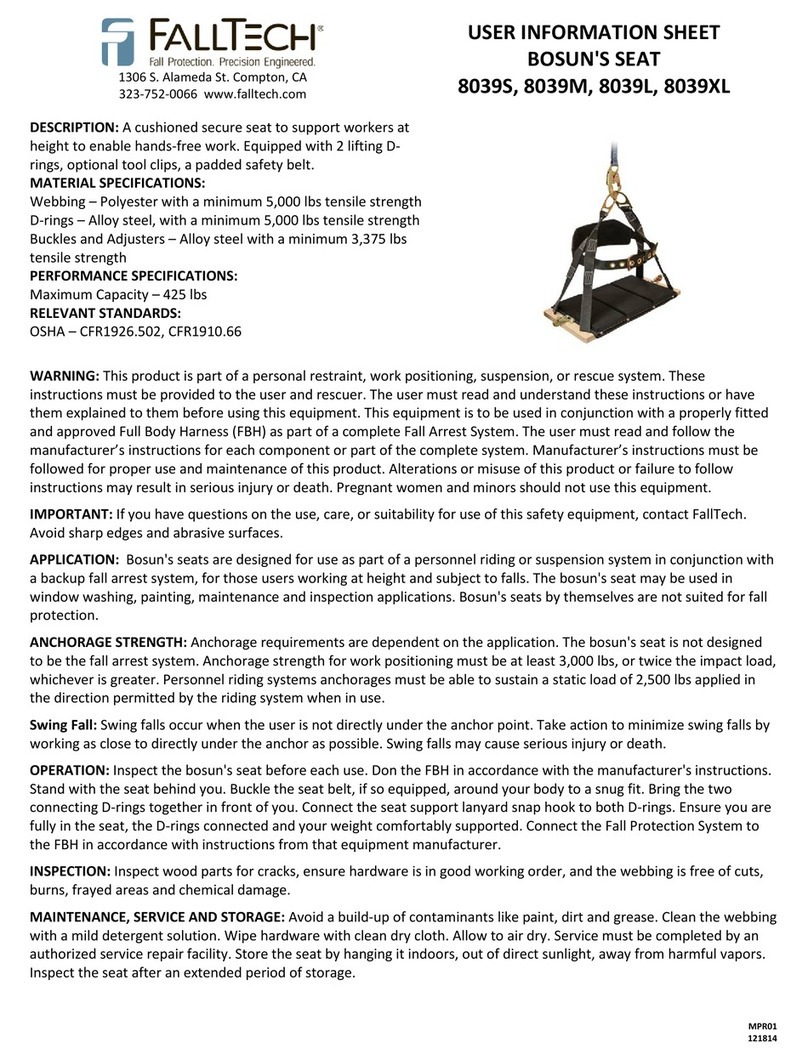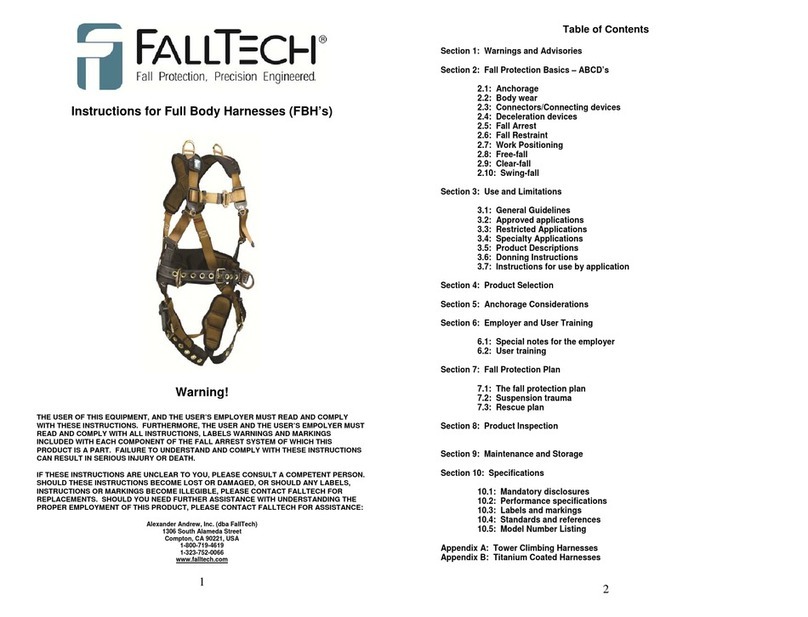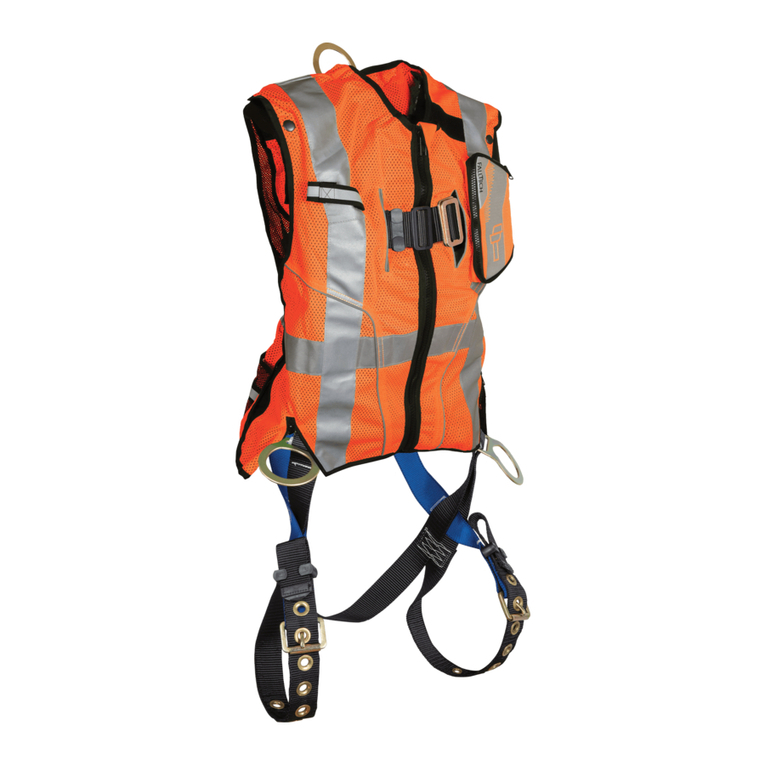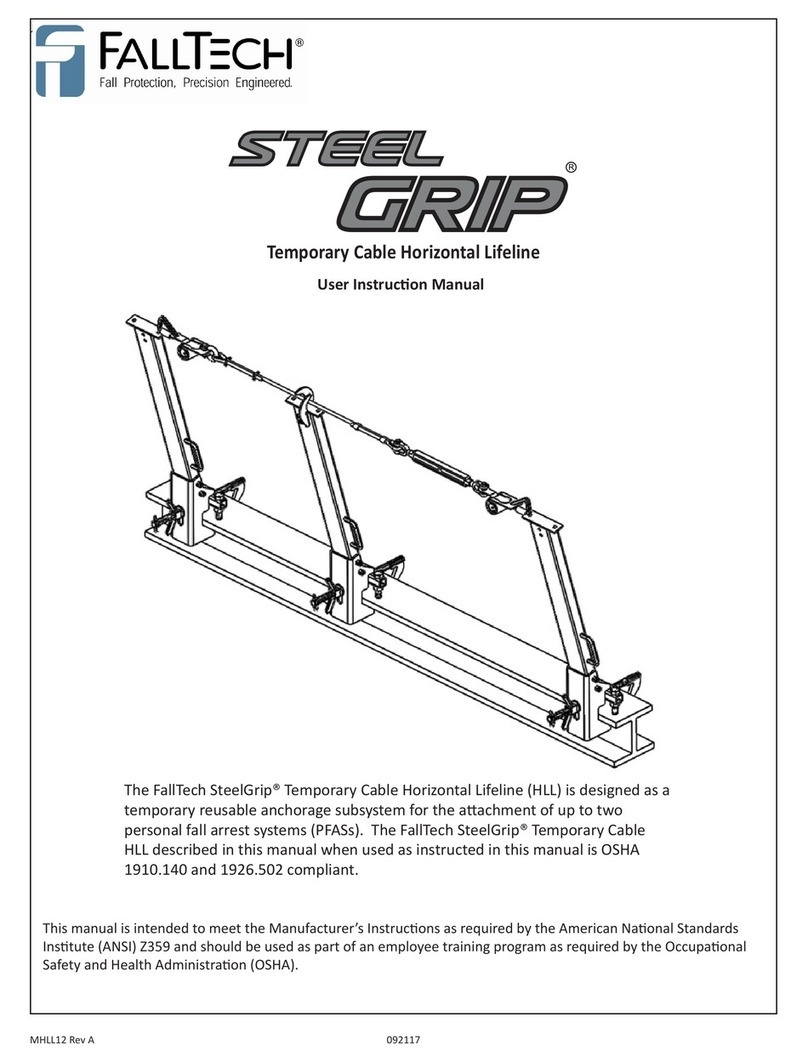42 lbs/ft² (42 lbs per square foot) or .29 psi, and must not have a slope of greater than
10° (ten degrees).
If you have any questions regarding the suitability of this product for your specific
application, please consult with a qualitifed person or contact FallTech before using.
Misuse of this product may result in serious injury or death.
Warning: Do not use this product if the roof or surface on which it is placed is
contaminated with oil, grease, lubricants, algae or any other substance that would
create slick conditions. Do not use if there is a risk of frost or freezing conditions.
Avoid sharp edges or highly abrasive surfaces. The other components of your
Personal Fall Arrest System (Body Wear, Connecting Device and Deceleration
Device) must meet the requirements of ANSI Z359. Failure to adhere to these
warnings may result in serious injury or death!
3.3: Restricted Applications
Harsh Chemical Environments: Acids and other caustic chemicals can cause damage
to this product and its component parts. Damage from chemical exposure can happen
quickly and will greatly degrade the ability of this product to function as intended. Do not
use this product where it may be exposed to harsh chemicals or substances.
Extended Free Falls: The EcoAnchor may be used in applications where freefall may
exceed six feet, provided that the PFAS includes a deceleration device that meets the
extended freefall requirements in ANSI Z359.13. Be sure to use a connecting device
that is rated for free falls greater than six feet (i.e. 7247, 7248, 8247, 8248).
Welding/Power Transmission: Because of its neoprene construction, EcoAnchor is
vulnerable to sparks, welding slag and sources of extreme heat. Do not use this product
if it may be exposed to very high temperatures, energized transmission equipment or
other hazards of this sort..
Cold Weather Applications: Because the EcoAnchor utilizes water as a ballast, it should
not be used outdoors in cold weather environments where it will be exposed to freezing
temperatures or snowy/icy surfaces.
3.4: Installation and Use – EcoAnchor for single users
1. Select the appropriate location to set up your FallTech EcoAnchor. The location
must be capable of supporting 947 lbs, must be clean and dry and free of debris,
protrusions, cracks, sharp edges or other conditions that could damage the neoprene
bladder. This location must also be set back a minimum of 10’ from the closest fall
hazard and must have a pitch or grade of no more than 10°. (Note: Do not select an
area where water accumulates).
2. Carefully inspect the EcoAnchor to ensure that it is undamaged and in serviceable
condition (see Section 8 of this manual for complete inspection details.
3. Spread the EcoAnchor bladder out flat, maximizing surface contact. Ensure it is
positioned as indicated on the label with the vent at the highest corner and with the
drain at the lowest point (see Fig. 3.2). The vent allows air to escape and prevents
over-pressurizing. Incorrect positioning can result in trapped air and under-
filling, making the anchor unsafe.
4. Fill the EcoAnchor with water by removing the cap from the fill valve hose and then
inserting the fill-valve hose inside a standard garden hose (see Fig. 3.1). The
EcoAnchor is full when water begins to flow from the vent valve, which is on the
opposite corner (diagonal from the fill valve). Detach the hose and seal the fill valve.
The EcoAnchor should now be filled to capacity. Any air trapped in the bladder can
be exhausted through the vent.
5. Check the EcoAnchor for leaks and ensure that it is positioned correctly on the
anchor surface. Attach your connecting device (lanyard, vertical lifeline, self-
retracting lanyard, etc) to the anchorage ring on the top of the EcoAnchor.
6. Ensure your Full Body Harness is properly donned and adjusted and that your
connecting device is securely attached to your back D-ring. Ensure your connecting
device is securely attached to the EcoAnchor.































